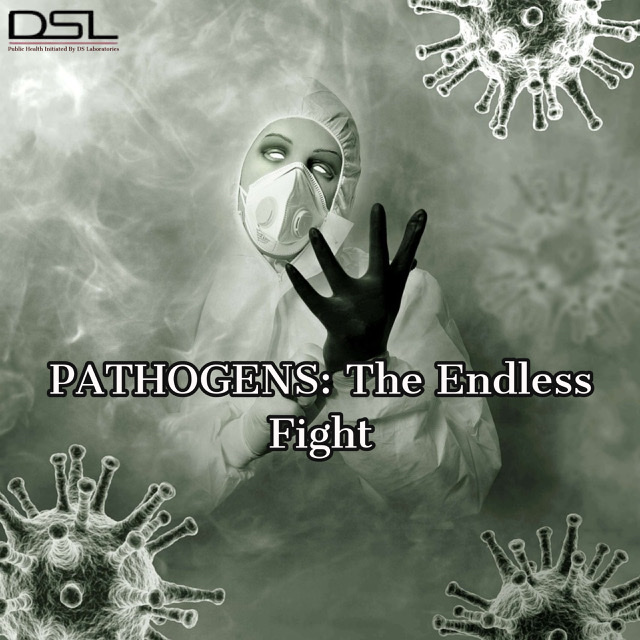


A pathogen or infectious agent or biological agents are microorganisms that cause infectious disease or illness to its host whether animal or human or both. Two main terms used to describe the ability and intensity of pathogen:
Pathogenicity: ability | Virulence: intensity
The intensity of diseases caused by pathogens are varied, some are life and some might be deadly.
There are different type of pathogens with different types of effects and characteristics.
CLASSIFICATION:
There are 4 main types of pathogens: VIRUS, BACTERIA, FUNGUS and PARASITES.
VIRUS:
Virus is a biological agent that multiply in a host and it is smaller than bacteria. Virus contains genetic material DNA or RNA along with a protein coating around it. Virus persist a very unique property i.e. it is living inside host or you can say multiply but nonliving outside host or in the environment.
Some viral diseases are like:
BACTERIA:
Bacteria are microscopic single-celled living organism.Bacteria are of two kind good or bad for human, some bacteria are good for health present in gut. Bacteria have a nucleus containing DNA. Bacteria are of different shapes and sizes.
Some bacterial diseases are like:
Tuberculosis
Bloody diarrhoea
Cholera
Pneumonia
Skin infections
Fungus or Fungi can be single or multi-celled organisms.Fungi cells are made up of nucleus along with cellular components enclosed within a thick cell wall. There are many types of fungi that can cause disease in humans.
Some fungal diseases are like:
PARASITES:
Parasites are organisms that live on other living organisms or hosts to survive and multiply. Some parasites are not very harmful but some can cause deadly infections.
Some parasitic diseases like:
REFERENCES:
https://www.medicinenet.com/what_are_the_five_pathogens/article.htm
http://blog.eoscu.com/blog/is-a-virus-living-or-non-living-yes?__cf_chl_captcha_tk__=pmd_cfbf56a5ba6e5c3400d3ce29c4aa854ed409390d-1628063826-0-gqNtZGzNAuKjcnBszQMi
https://www.healthline.com/health/bacteria